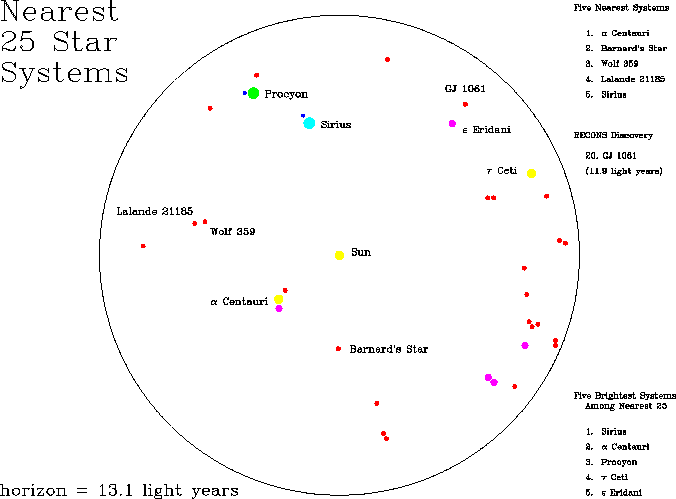|
This figure shows a two-dimensional map of
three-dimensional nearby space. The nearest 25 star systems are shown
at their relative distances from the Sun, to a horizon of 4.0 parsecs,
or 13.1 light years. In total, there are 36 stars in this sample,
including 16 single stars, 7 binary star systems, and 2 triple star
systems. The systems are plotted so that right ascension zero hours
(RA = 0, toward the constellation Aries) is to the right, and the RA
increases counterclockwise (RA = 6 at the top, RA = 12 to the left, RA
= 18 to the bottom).
Different colors and sizes represent different types of stars, from
small red dwarfs like Barnard's Star to larger stars like the yellow
Sun and blue-white Sirius. Tiny white dwarf companions to Sirius and
Procyon are the remnant cores of more massive stars that have already
evolved through the red giant phase and shed their outer layers. The
nearest star to the Sun is Proxima Centauri, a red dwarf 4.3 light
years away. It is the smallest component in the alpha Centauri system
which is, in fact, a triple star system. In 1997, the RECONS team
discovered the 20th nearest star, GJ 1061, in the southern
constellation Horologium, the Pendulum Clock.
NOTE: For clarity, the points representing the stars have been
enlarged relative to the distances between them. In fact, at the size
of the Sun shown (radius 1/16 of an inch), Proxima Centauri would be
57 miles away.
|

